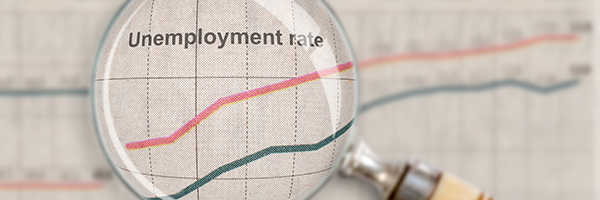
July 25, 2024 | Daily JAM, Morning Briefing |
The U.S. economy grew at a stronger than expected 2.8% annualized rate in the second quarter. The growth rate for the quarter that ended in June was double the 1.4% rate in the first quarter. Consumer spending and business investments drove almost all of the second quarter’s growth. But below the top line numbers I can see a slowdown in some fundamental trends from the first quarter.

July 6, 2023 | Daily JAM, Morning Briefing |
Earlier this week economists were projecting the official government jobs report due on Friday, that is tomorrow, would show that the U.S. economy added just 200,000 jobs in June. This morning, however, the ADP Research Institute’s survey of private employers showed the economy added 497,000 jobs in June. That’s more than twice the 220,000 gain that economists had projected for this report. And way above the 267,000 jobs reported by this survey in May.

July 3, 2023 | Daily JAM, Videos |
Today’s Trend of the Week is U.S. Economy Last Man Standing. The U.S. economy is moving along at a surprisingly positive rate given the Fed’s repeated rate increases. Earlier in the year I expected a summer recession, but that no longer appears to be the case. We may see a recession later in the year, but as of now, the U.S. economy hasn’t dropped into a negative quarter–and the U.S. economy looks like the strongest in the world. Which my not be saying much. China is growing faster by the official numbers, but it needs to maintain at least a 5% growth rate to keep up with population growth. At the moment, with 4% growth, China’s unemployment rate for 16-24 year-olds is over 20%. This has led to country-wide dips in consumerism and has hammered the overall economy. We’re now seeing a slowdown in the EuroZone. The European Central Bank announced that they’re still seeing 6% inflation and raised interest rates by another 25 basis points. This policy is likely continue as the central bank tries to reach a 2% inflation rate. Growth in the EuroZone has been down for the last five months, and hit a new low in June. The Purchasing Managers Index (PMI) fell to 50.3. 50 is considered the break points between contraction and expansion. There’s a good possibility that the second quarter could be negative for the Eurozone, bringing the bloc closer to a recession. With China and the eurozone flailing economically, the U.S. economy is the last man standing.

June 28, 2023 | Daily JAM, Short Term |
Investors and traders have been riding a Goldilocks market that has rested on a belief that all news is good news. There are signs that belief is facing challenges that might, just might, lead to a replacement of Goldilocks with some other narrative. Right now, the golden child is still resting peacefully at the Three Bears’ house with a stomach full of “just right” porridge, but sentiment in the last week has at least been willing to countenance the possibility that some bad news is bad news. And, I can see a lurking suspicion in the market that may be in the weeks to come all news if bad news.

March 1, 2023 | Daily JAM, Morning Briefing |
The seasonally adjusted S&P Global US Manufacturing Purchasing Managers’ Index was revised lower to 47.3 in February. That’s up from a 46.9 reading in January. But it’s still below the 50-level that separates expansion from contraction in this index.

February 27, 2023 | COST, Daily JAM, Videos, WMT |
This week’s Trend of the Week is How Tired Is the Consumer? Consumer spending makes up 70% of the economy, so if consumers get tired and start spending less, the economy as a whole will slow down. The current consumer data doesn’t look good. Credit card debt is at an all-time high and delinquency rates are up to 4%. On February 21, Walmart (NYSE: WMT) came out worried about the full year, noting that consumers were purchasing less-expensive goods, and lowered its guidance for 2023 below Wall Street expectations. However, the lowered guidance didn’t affect the stock price. Why? As consumers are looking more tired, investors will look for stocks like Walmart and Costco, where a consumer would go to substitute products with lower prices. If you’re looking to put some money somewhere if the consumer is looking tired, Costco (NASDAQ: COST), Wal-Mart (NYSE: WMT) and Dollar General (NYSE: DG) are good options. If you believe the consumer is REALLY tired, you may want to look to put your money somewhere outside of the market, like a CD with a 5% yield. For other 5% options, check out my recent post “The best way to get a 5% yield–my choices and their pluses and minuses”: https://www.jubakpicks.com/the-best-way-to-get-a-5-yield-my-choices-and-their-pluses-and-minuses/.

January 26, 2023 | Daily JAM, Morning Briefing |
The U.S. economy grew at a 2.9% annual rate in the December quarter of 2022. That brought growth for 2022 as a whole to 2.1%. Consumer spending was strong enough to offset slowdowns in housing and manufacturing. So good news. But growth in the quarter was still slower than the 3.2% growth rate in the third quarter

January 17, 2023 | Daily JAM |
Granted these are all reports from outside news sources but there are a number of them. Where there’s smoke there might well be fire. U.K. broadcaster Sky News has reported that Microsoft plans to cut about 5% of its workforce or about 11,000 roles.

October 7, 2022 | Daily JAM, Morning Briefing |
The U.S. economy added 263,000 jobs in September (after seasonal adjustments), the Labor Department reported this morning. The total was down from 315,000 in August but it was enough to bring the unemployment rate down to 3.5% from 3.7% in August. This good news for workers and families, is, of course, bad news for the financial markets, which keep looking for signs that the economy is slowing enough to slow the Federal Reserve’s aggressive round of interest rate increases.

October 6, 2022 | Morning Briefing |
First-time claims for unemployment rose to 219,999 for the week ended October 1, Labor Department reported this morning. Economists had projected a rise to 203,000. The prior week showed a revised 193,000 initial claims. Financial markets aren’t sure how much this means for tomorrow’s report on September employment. It could be the harbinger of a drop in the rate of job creation and an uptick in unemployment. On the other hand, the ADP job survey came in hotter than expected.

October 4, 2022 | Daily JAM, Videos |
My one-hundred-and-ninety-first YouTube video: “Trend of the Week Housing Prices Fall, Finally” went up today This week’s Trend of the Week is “Housing Prices Fall, Finally.” We’ve recently seen a big increase in mortgage rates, but the housing market hadn’t really slowed, until July. According to the S&P CoreLogic Case-Shiller Home Price Index, the year-over-year housing prices went up 18.1% in June of this year, and 15.8% in July. While it’s still a big increase over last year, there is a noticeable deceleration. Month-to-month housing prices in the 20 cities in the Case-Shiller Index fell 0.4% in July, marking the first drop in month-to-month housing prices since 2012. If you look at Lennar Corporation (LEN), a good representation of the housing and building market, you can see the decline in mid-August where investors started to truly believe home and building prices are indeed going to fall. Watch the housing sector. It’s the first place where the Fed’s interest rate increase is having a tangible effect. We’ll continue to see housing prices fall as mortgage rates go up. And it’s an early sign that the Fed’s tightening is working to slow the economy.

August 16, 2022 | Daily JAM, Morning Briefing |
Walmart shares were up 5.11% today, August 16, at the close. I think it’s fair to call that a relief rally as the company beat lowered earnings and sales forecasts for fiscal second-quarter earnings today. And then confirmed its guidance for the second half of 2022. Remember that the company had slashed guidance twice in the last three months on May 17 and then again on July 26.













